Fiat 500 vs Honda HR-V – Which one offers the better deal?
Everyday use, family trips or long-distance drives – here’s where the differences show.
Discover whether Fiat 500 or Honda HR-V fits your lifestyle better.
Costs and Efficiency:
Price and efficiency are often the first things buyers look at. Here it becomes clear which model has the long-term edge – whether at the pump, the plug, or in purchase price.
Fiat 500 has a clearly advantage in terms of price – it starts at 18800 £, while the Honda HR-V costs 29700 £. That’s a price difference of around 10894 £.
Fuel consumption also shows a difference: Fiat 500 manages with 5.30 L and is therefore slight more efficient than the Honda HR-V with 5.40 L. The difference is about 0.10 L per 100 km.
Engine and Performance:
Power, torque and acceleration are the classic benchmarks for car enthusiasts – and here, some clear differences start to show.
When it comes to engine power, the Honda HR-V has a minimal edge – offering 131 HP compared to 118 HP. That’s roughly 13 HP more horsepower.
In acceleration from 0 to 100 km/h, the Fiat 500 is somewhat quicker – completing the sprint in 9 s, while the Honda HR-V takes 10.60 s. That’s about 1.60 s faster.
In terms of top speed, the Honda HR-V performs hardly perceptible better – reaching 170 km/h, while the Fiat 500 tops out at 155 km/h. The difference is around 15 km/h.
There’s also a difference in torque: Honda HR-V pulls somewhat stronger with 253 Nm compared to 220 Nm. That’s about 33 Nm difference.
Space and Everyday Use:
Cabin size, boot volume and payload all play a role in everyday practicality. Here, comfort and flexibility make the difference.
Seats: Honda HR-V offers somewhat more seating capacity – 5 vs 4.
In curb weight, Fiat 500 is clearly perceptible lighter – 1141 kg compared to 1452 kg. The difference is around 311 kg.
In terms of boot space, the Honda HR-V offers convincingly more room – 319 L compared to 185 L. That’s a difference of about 134 L.
In maximum load capacity, the Honda HR-V performs significantly better – up to 1289 L, which is about 739 L more than the Fiat 500.
When it comes to payload, Honda HR-V clearly perceptible takes the win – 418 kg compared to 325 kg. That’s a difference of about 93 kg.
Who wins the race?
The Honda HR-V proves to be leaves the rival little chance and therefore becomes our DriveDuel Champion!
Honda HR-V is the better all-rounder in this comparison.
 @ Honda Motor Co., Ltd.
@ Honda Motor Co., Ltd.
Honda HR-V
Fiat 500
The Fiat 500 is a cheeky, retro‑styled city car that turns heads with its iconic looks and playful personality. Perfect for weaving through tight streets and easing into tiny parking spots, it’s aimed at buyers who want style and character more than grand touring prowess.
details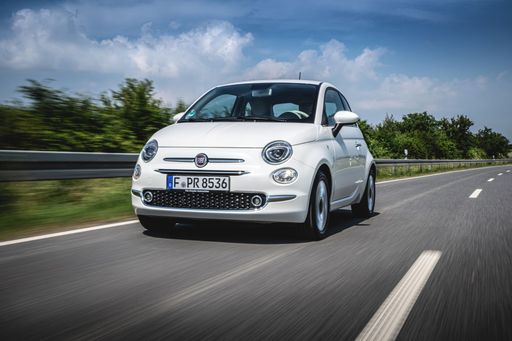 @ Fiat / Stellantis Media
@ Fiat / Stellantis Media
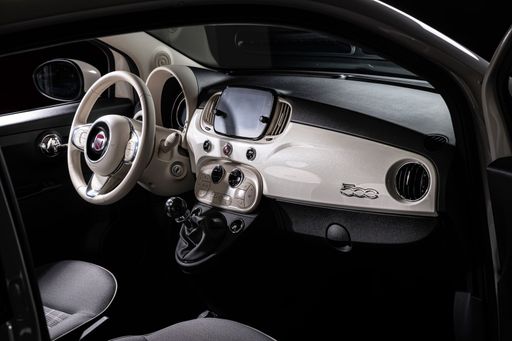 @ Fiat / Stellantis Media
@ Fiat / Stellantis Media
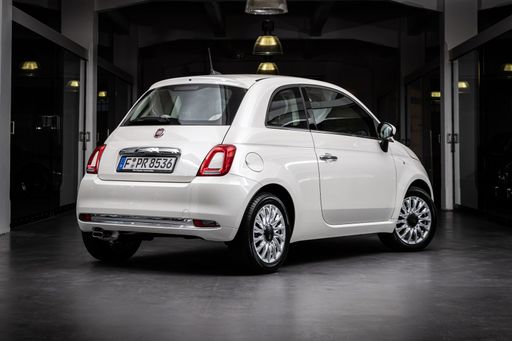 @ Fiat / Stellantis Media
@ Fiat / Stellantis Media
Honda HR-V
The Honda HR-V is the sensible compact crossover that blends roomy practicality with a composed, friendly drive, making it an easy pick for buyers who want everyday usability without fuss. It won’t thrill hardcore enthusiasts, but its clever packaging, comfortable cabin and low-key styling make life simpler — and that’s exactly the point.
details @ Honda Motor Co., Ltd.
@ Honda Motor Co., Ltd.
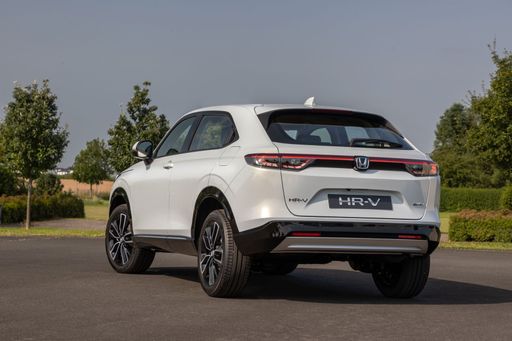 @ Honda Motor Co., Ltd.
@ Honda Motor Co., Ltd.
 @ Honda Motor Co., Ltd.
@ Honda Motor Co., Ltd.
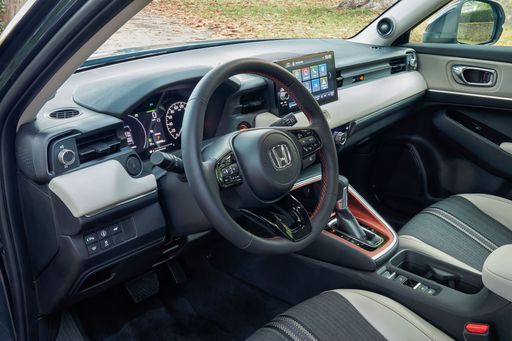 @ Honda Motor Co., Ltd.
@ Honda Motor Co., Ltd.
 @ Fiat / Stellantis Media
@ Fiat / Stellantis Media
|
 @ Honda Motor Co., Ltd.
@ Honda Motor Co., Ltd.
|
|
|
|
Costs and Consumption |
|
|---|---|
|
Price
18800 - 30800 £
|
Price
29700 - 35400 £
|
|
Consumption L/100km
5.30 L
|
Consumption L/100km
5.40 L
|
|
Consumption kWh/100km
13 - 14.7 kWh
|
Consumption kWh/100km
-
|
|
Electric Range
190 - 331 km
|
Electric Range
-
|
|
Battery Capacity
21.3 - 37.3 kWh
|
Battery Capacity
-
|
|
co2
0 - 120 g/km
|
co2
122 g/km
|
|
Fuel tank capacity
-
|
Fuel tank capacity
40 L
|
Dimensions and Body |
|
|---|---|
|
Body Type
Hatchback
|
Body Type
SUV
|
|
Seats
4
|
Seats
5
|
|
Doors
3 - 4
|
Doors
5
|
|
Curb weight
1141 - 1475 kg
|
Curb weight
1452 kg
|
|
Trunk capacity
183 - 185 L
|
Trunk capacity
319 L
|
|
Length
3631 - 3632 mm
|
Length
4355 mm
|
|
Width
1683 - 1684 mm
|
Width
-
|
|
Height
1527 - 1532 mm
|
Height
1582 mm
|
|
Max trunk capacity
440 - 550 L
|
Max trunk capacity
1289 L
|
|
Payload
250 - 325 kg
|
Payload
418 kg
|
Engine and Performance |
|
|---|---|
|
Engine Type
Electric, Petrol MHEV
|
Engine Type
Full Hybrid
|
|
Transmission
Automatic, Manuel
|
Transmission
Automatic
|
|
Transmission Detail
Reduction Gearbox, Manual Gearbox
|
Transmission Detail
CVT
|
|
Drive Type
Front-Wheel Drive
|
Drive Type
Front-Wheel Drive
|
|
Power HP
65 - 118 HP
|
Power HP
131 HP
|
|
Acceleration 0-100km/h
9 - 16.2 s
|
Acceleration 0-100km/h
10.6 - 10.8 s
|
|
Max Speed
135 - 155 km/h
|
Max Speed
170 km/h
|
|
Torque
220 Nm
|
Torque
253 Nm
|
|
Number of Cylinders
3
|
Number of Cylinders
4
|
|
Power kW
48 - 87 kW
|
Power kW
96 kW
|
|
Engine capacity
999 cm3
|
Engine capacity
1498 cm3
|
General |
|
|---|---|
|
Model Year
2023 - 2025
|
Model Year
2025
|
|
CO2 Efficiency Class
A, D
|
CO2 Efficiency Class
D
|
|
Brand
Fiat
|
Brand
Honda
|
What drivetrain options does the Fiat 500 have?
The Fiat 500 is offered with Front-Wheel Drive.
The prices and data displayed are estimates based on German list prices and may vary by country. This information is not legally binding.
